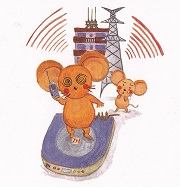translated from the article of Okinawa Times May 19, 2022 07:35 The orginal Japanese article is here
The Okinawa Prefecture-managed Chatan Water Filtration Plant, which supplies water to the public, has been experiencing a reversal phenomenon in which PFAS levels increase after purification treatment of organic fluorine compounds (PFAS) contained in the water.
0n the 18th of May, researchers found that a reversal phenomenon, in which the PFAS value increases after purification treatment of the PFAS contained in the water, has been occurring frequently.
In the most recent fiscal year of 2021, the value of purified water was higher in 40 of the 51 times it was checked. Although the government’s provisional target value (50 nanograms per liter) was not exceeded, it was exceeded in three of the four years from FY2015 to FY2018.
The prefecture believes the reason for the reversal phenomenon is that the activated carbon used to purify the water has deteriorated over time, and the PFAS attached to the carbon is peeling off. The prefecture has accelerated the frequency of replacement from once every eight years to once every four years. (Takayo Taira, Social Affairs Department)
The Chatan Water Filtration Plant supplies tap water to 450,000 people in seven municipalities: Naha, Okinawa, Urasoe, Ginowan, Chatan, Kitanakagusuku, and Nakagusuku. There are 16 granular activated carbon adsorption ponds on the site.
The Prefectural Bureau of Public Enterprises conducts a weekly to monthly survey of the “raw water” before treatment and the “purified water” after treatment for PFOS and PFOS.
The results show that the percentages of the values in the purified water that exceeded those in the raw water were 82%, 1 00%, 69%, 15%, 42%, 6 5%, 75%, and 78%. During this period, reversals occurred in approximately 65% of the cases.
The provisional targets were exceeded in FY2015 (up to 120 nanograms), FY2017 (up to (up to 120 nanograms) and FY18 (up to 63 nanograms).
The reason for the reversal phenomenon was explained by the Prefectural Bureau of Public Enterprises: “The adsorption rate of activated carbon declines with age, and accumulated PFAS is adsorbed and desorbed. This phenomenon is particularly likely to occur when the concentration of PFAS in raw water is low. Activated carbon is considered an effective countermeasure for PFAS, but it is not a panacea.
As a measure to reduce PFAS levels, activated carbon was replaced once every eight years, but this was changed to once every four years starting last year. The company also introduced activated carbon with a higher PFAS adsorption rate. Half of the activated carbon was replaced last year, and all will be replaced by FY2023.
The prefectural government has requested an on-site survey at the Kadena Air Base, which is believed to be the source of the contamination, but the U.S. military has not given permission.




コメント